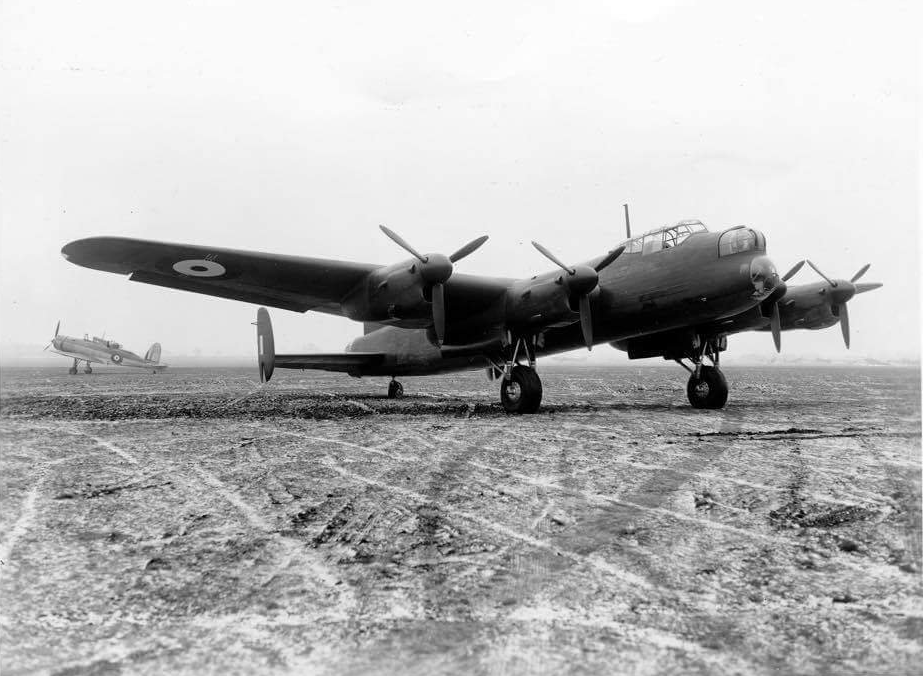
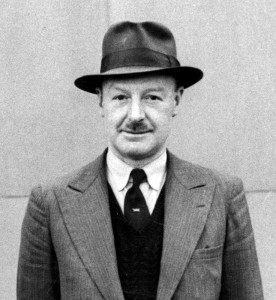
9 January 1941: Test pilot Captain Harry Albert (“Sam”) Brown, O.B.E., (1896–1953) makes the first flight of the Avro Lancaster prototype, BT308, at RAF Ringway, Cheshire, England, south of Manchester.
Throughout World War II, 7,377 of these long range heavy bombers were produced for the Royal Air Force. The majority were powered by Rolls-Royce or Packard Merlin V-12 engines—the same engines that powered the Supermarine Spitfire and North American P-51 Mustang fighters.
The bomber was designed by Roy Chadwick, F.R.S.A., F.R.Ae.S., the Chief Designer and Engineer of A. V. Roe & Company Limited, based on the earlier twin-engine Avro Manchester Mk.I. Because of this, it was originally designated as the Manchester Mk.III, before being re-named Lancaster. Chadwick was appointed Commander of the Most Excellent Order of the British Empire, 2 June 1943, for his work.
The first prototype, BT308, was unarmed and had three small vertical fins.
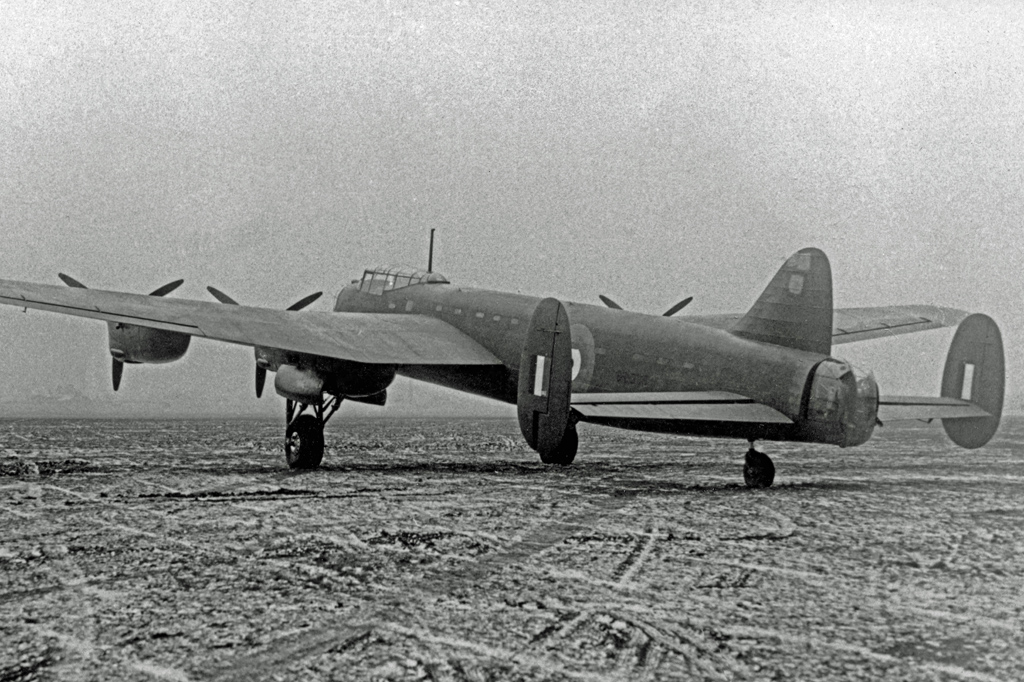
With the second prototype, DG595, the small center vertical fin was deleted and two larger fins were used at the outboard ends of a longer horizontal tailplane. DG595 was also equipped with power gun turrets at the nose, dorsal and ventral positions, and at the tail.
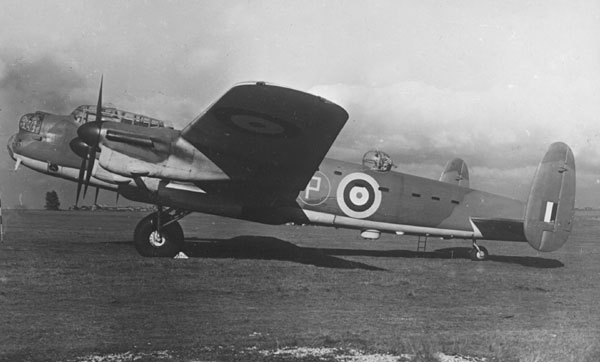
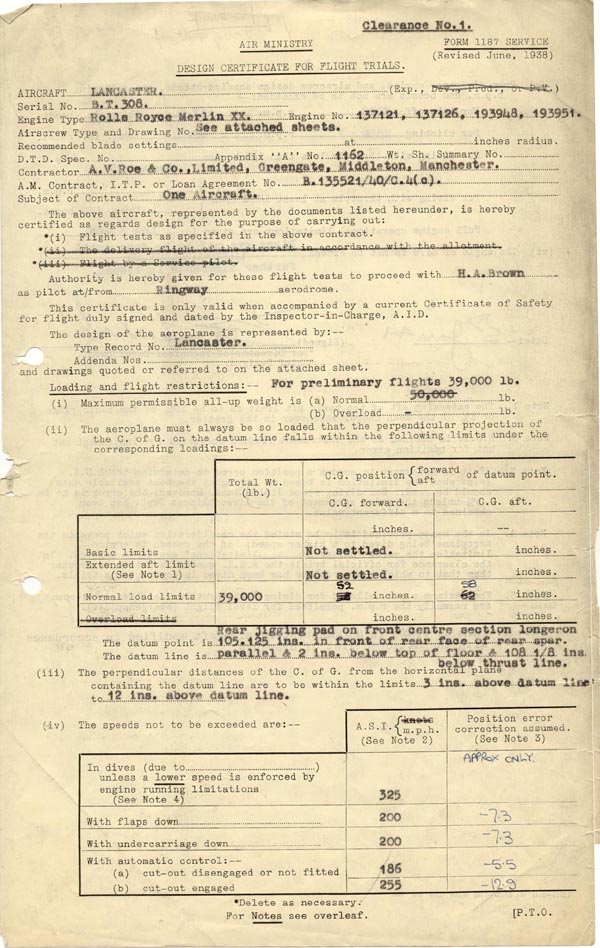
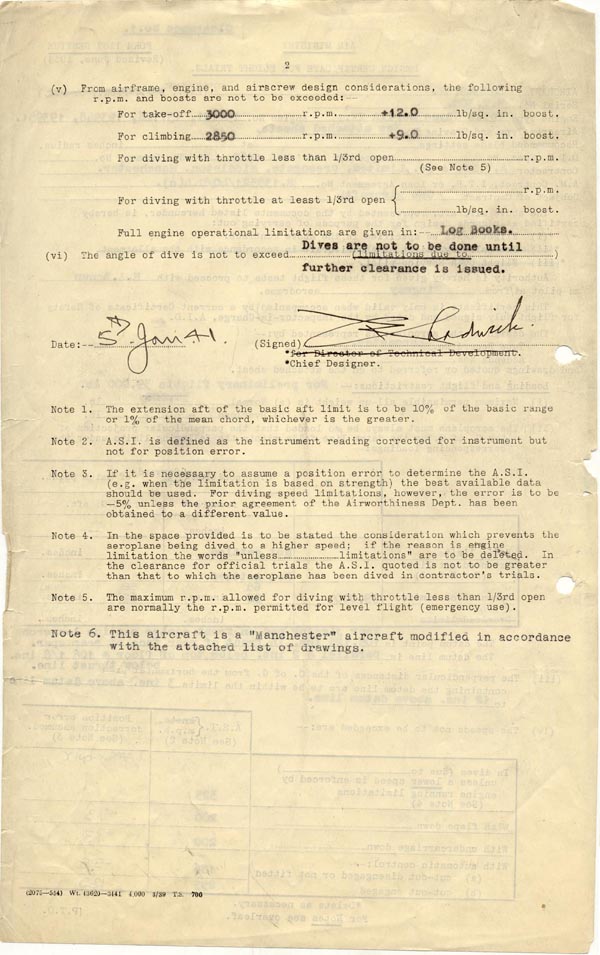


DG595 was used for performance testing at the Aeroplane and Armament Experimental Establishment (A&AEE) at Boscombe Down. The Mark I had a maximum economic cruise speed of 267 miles per hour (430 kilometers per hour) at 20,800 feet (6,340 meters), and a maximum speed of 286 miles per hour (460 kilometers per hour) at 20,000 feet (6,096 meters) at a gross weight of 45,300 pounds (20,548 kilograms).¹ Its service ceiling was 20,000 feet (6,096 meters) at 64,500 pounds (29,257 kilograms). It had a range of 2,530 miles (4,072 kilometers) with a 7,000 pound (3,175 kilogram) bomb load.
The Lancaster was designed to carry a 14,000 pound (6,350 kilogram) bomb load, but modified bombers carried the 22,000 pound (9,979 kilogram) Grand Slam bomb. For defense, the standard Lancaster had eight Browning .303-caliber Mark II machine guns in three power-operated turrets, with a total of 14,000 rounds of ammunition.
According to the Royal Air Force, “Almost half all Lancasters delivered during the war (3,345 of 7,373) were lost on operations with the loss of over 21,000 crew members.”
Only two airworthy Avro Lancasters are in existence.
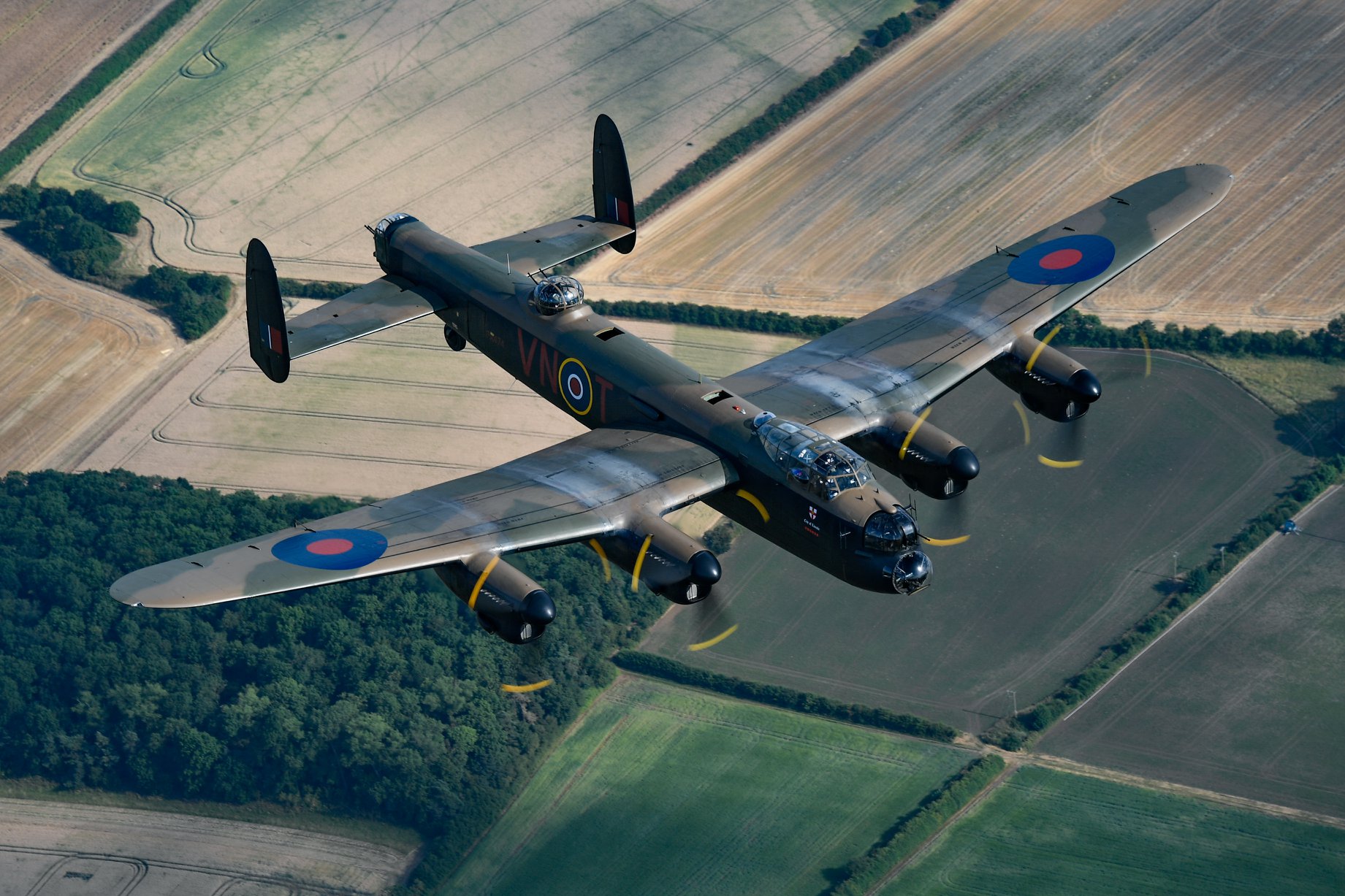
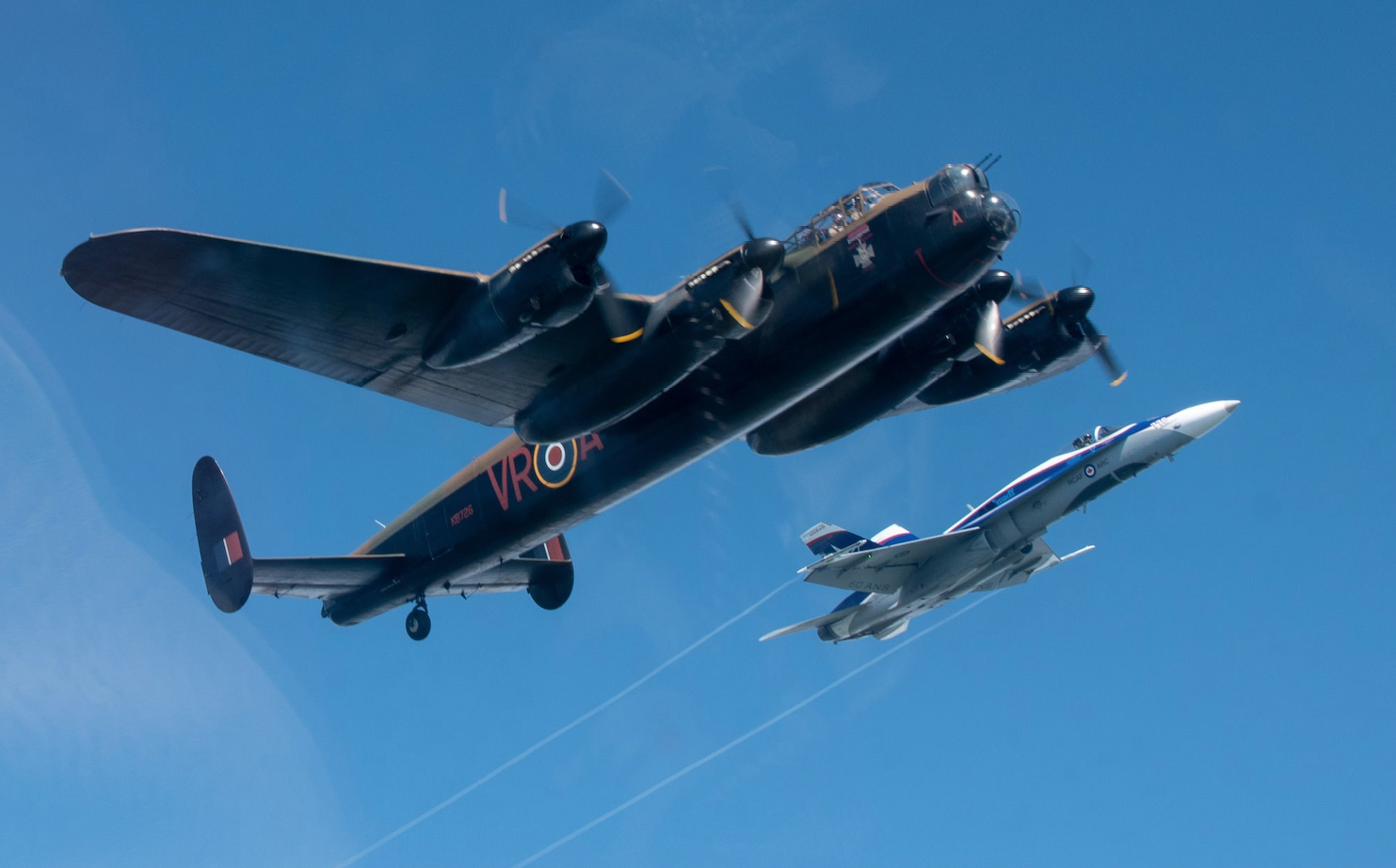
¹ Speeds shown are True Air Speed (T.A.S.)
© 2019, Bryan R. Swopes
Well Hello!! The Lancaster !!! i have personal in this Plane as my uncle flew in a lancaster WW11, He was in Unit 514 sqdn service no998689 Rank Flight sarg( W op)Air Gunner, was on a Mission to Germany Berlin 24th dec and was hit And crashed ,his plane now as LL.671 His Grave is in Durnbach War Cemetery 1943 I was five years old, And low and behold in later years my family used to go to Broughton on the Battle of Britain day. Many thanks Peter. RE My Uncle Tony my mothers Brother.
As all Lancasters were made at Woodford, and flown out of there how is Ringway down as the initial flight airfield? Perhaps in wartime nobody mentioned Woodford as they were trying to keep it secret? Anybody know different?
Avro Lancasters were produced by A.V. Roe & Co. Ltd.; Austin Motors Limited; Fairey Aviation Company, Ltd.; Metropolitan-Vickers; Sir W.G. Armstrong Whitworth Aircraft Ltd.; Vickers-Armstrong; and Victory Aircraft Ltd. More than 4,400 aircraft were built at RAF Ringway by Fairey Aviation and A.V. Roe. Avro’s experimental department was Ringway. The Manchester prototype and Manchester Mk. III (Lancaster prototype) were built there.
My father also flew with 514 Sqdn. He was a navigator . His plane was shot down in April 44. He was the only survivor. He was hidden by the Resistance until the area was liberated.
.
The larger tailplane and double fins quickly fitted to the prototype were also flown on the late Manchester 1A. It is interesting to note how similar the key dimensions of the Lancaster and B17 are, although because of the differences between night and daylight operations, their gun and bomb-loads were quite different. Clearly, in a combined offensive, they complemented each other well.
I have always wondered why the RAF stuck with the .303-caliber machine guns, while their opponents were using 20 mm cannon.
It’s a shame so few survived the war. Agree with you Bryan about the use of the .303 guns when .50 caliber machine guns were so common in the USAAF. Also odd that such a large multi-engine aircraft was flown by only one pilot. I wonder if that fact contributed to the high loss rate in operations.
It couldn’t have helped. If the pilot was incapacitated by flak or enemy fighters, the rest of the crew would die along with him.
I believe it wasn’t unknown to pull an injured pilot out of the seat and another crew member to take it on. Proportionate to operations and bombs delivered, the Lancaster loss rate was significantly lower than that of the contemporaryStirling and Halifax. I can’t remember the numbers but the difference was surprising. Arthur Harris said that he would have wished for an all Lancaster force, if it had been possible. It was more difficult to get out of though because the forward escape hatch was too narrow, although that was rectified in later production. Even so, the crew survival rate was better than that of the other two. Also later in the war, the rear turret was armed with two 0.5″ Brownings instead of the four 0.303, I think the top turret was also changed to 0.5″. The Tiger Force Lancasters intended for Japanese operations were armed that way, but the atomic bomb ended the war before that got into action.